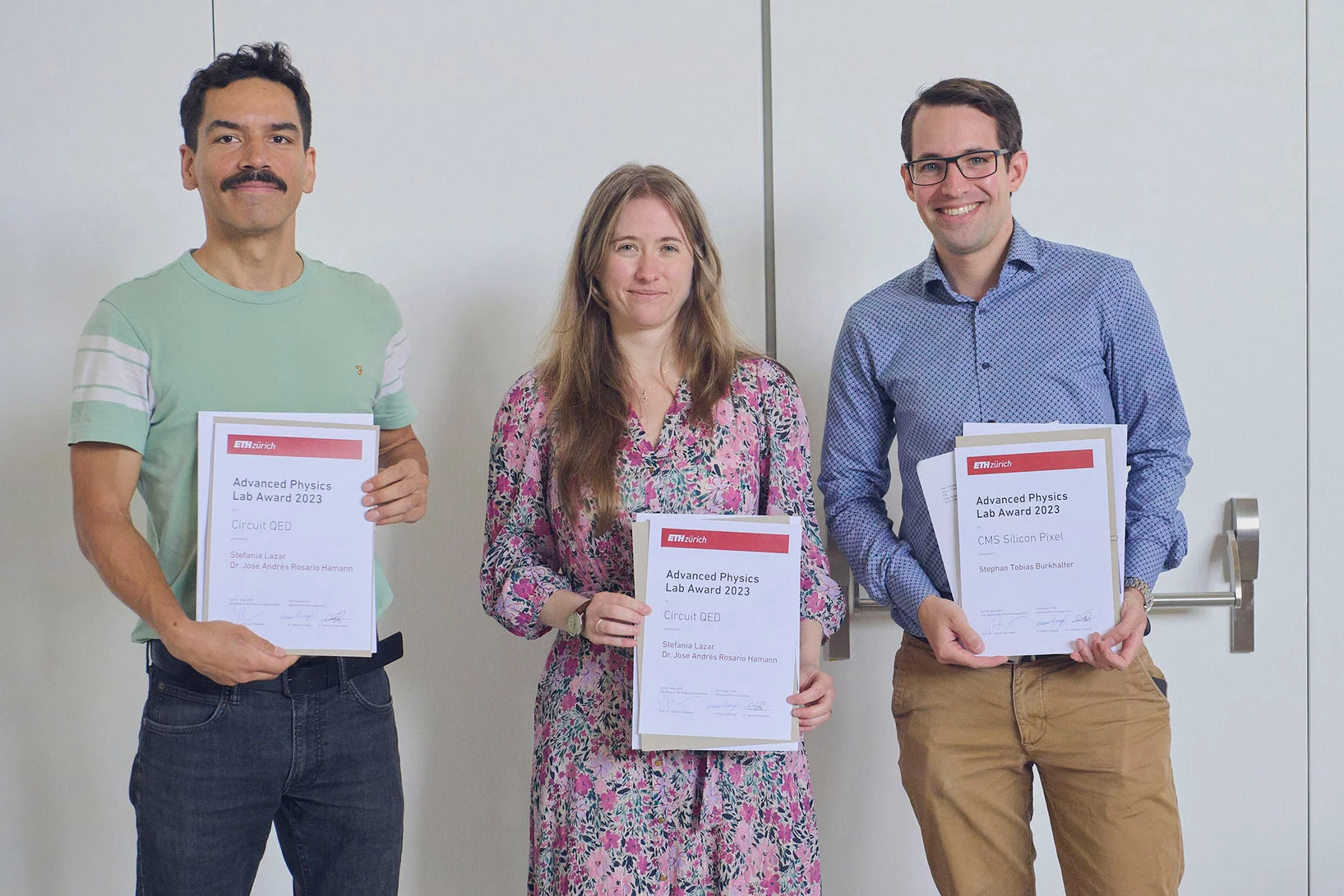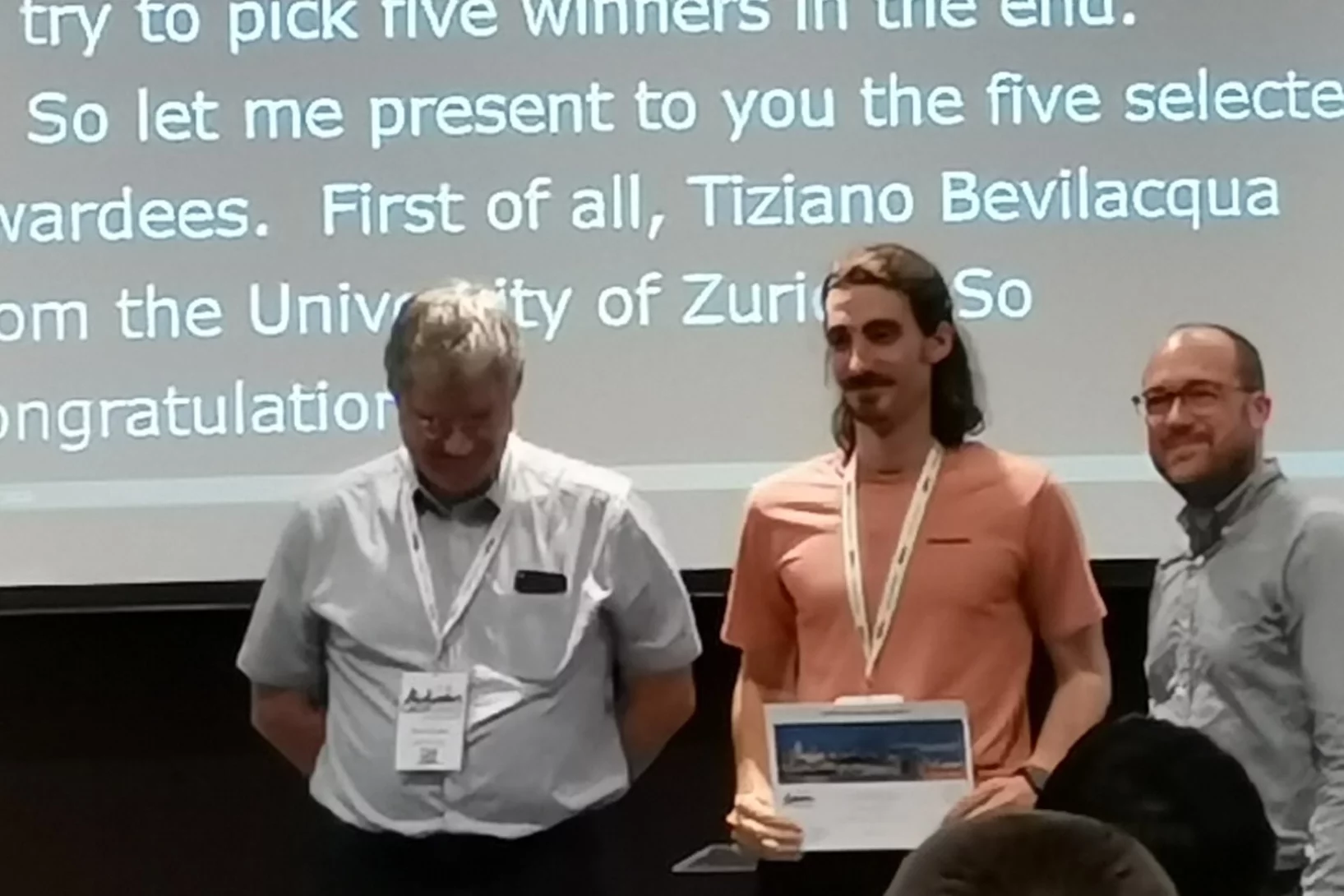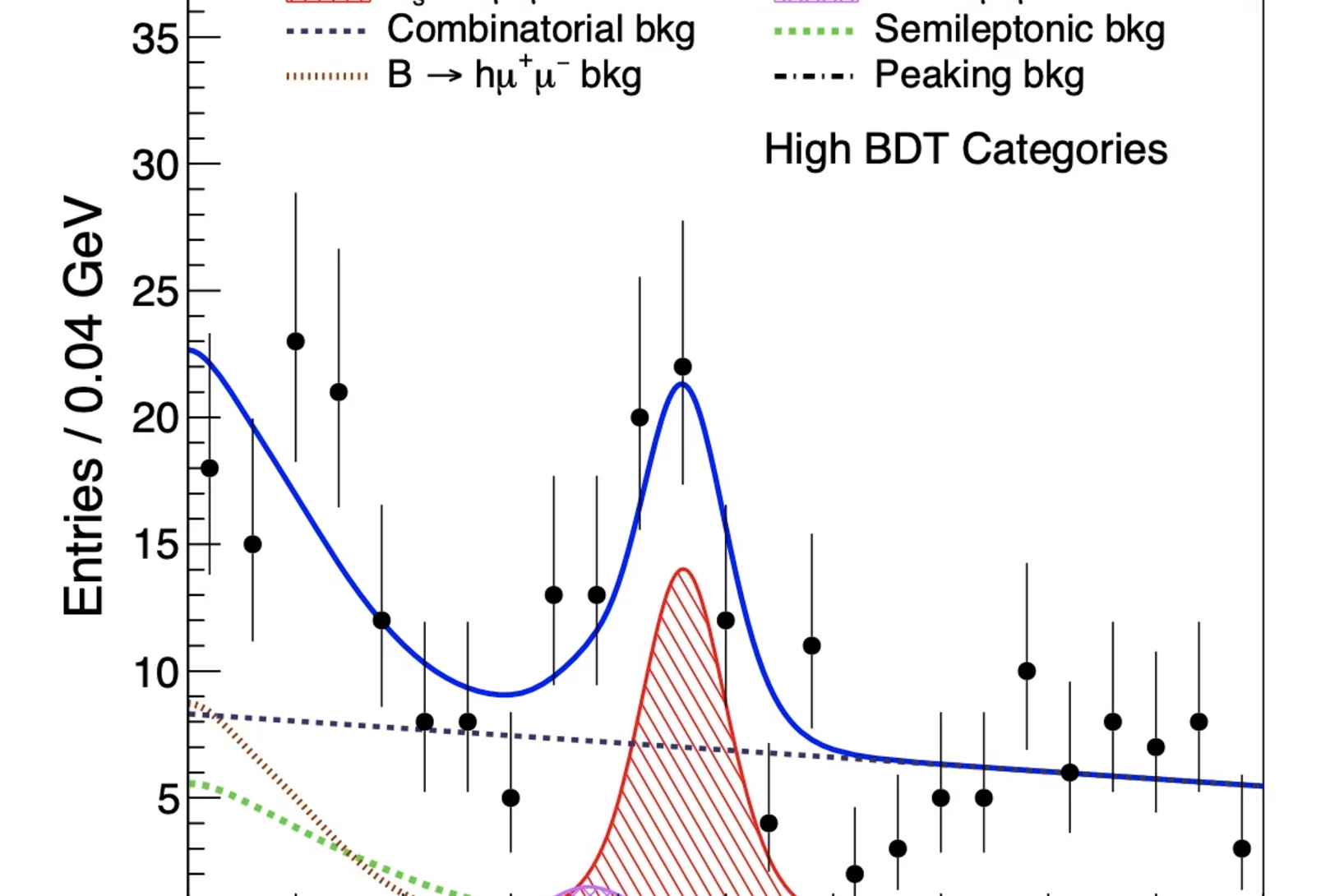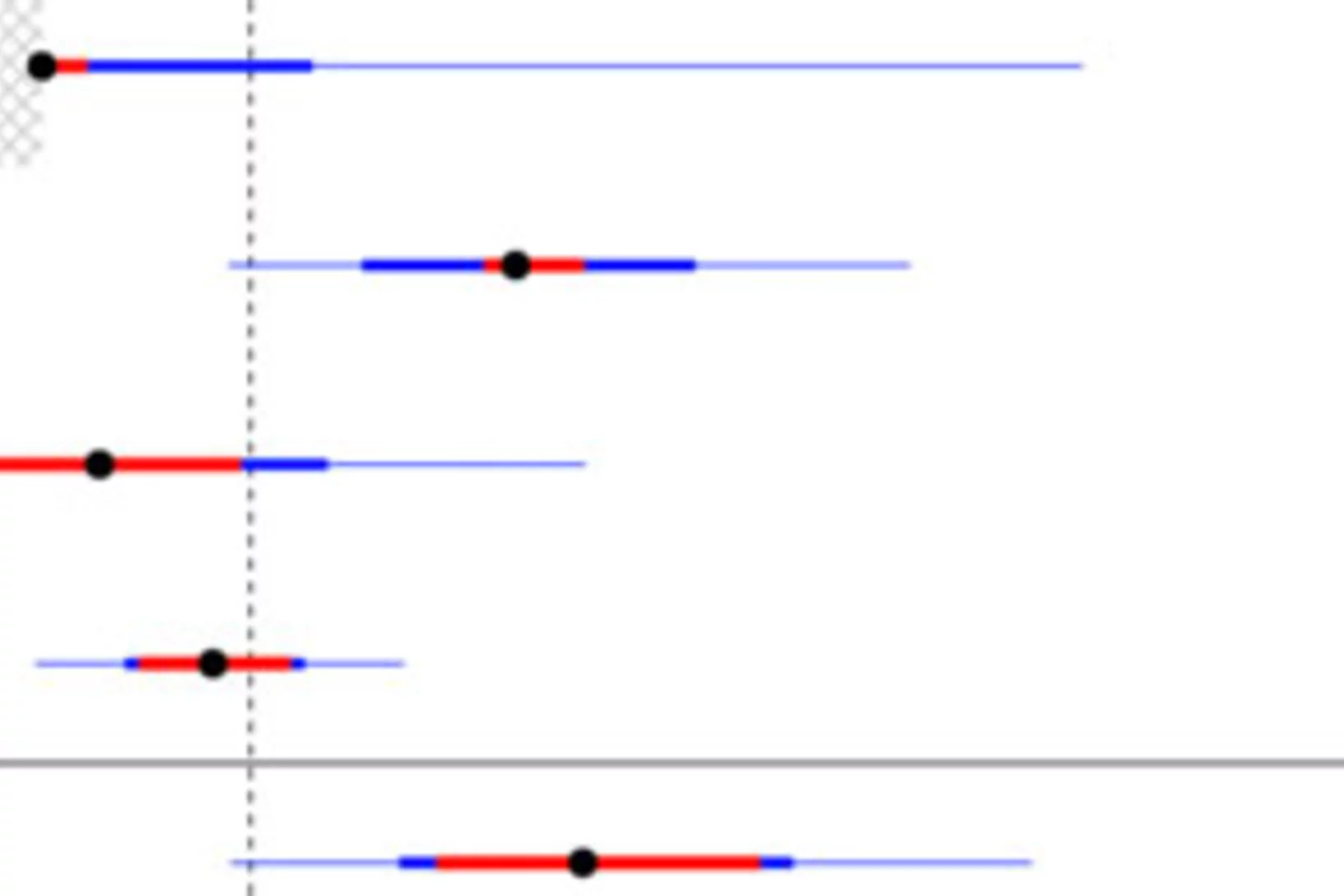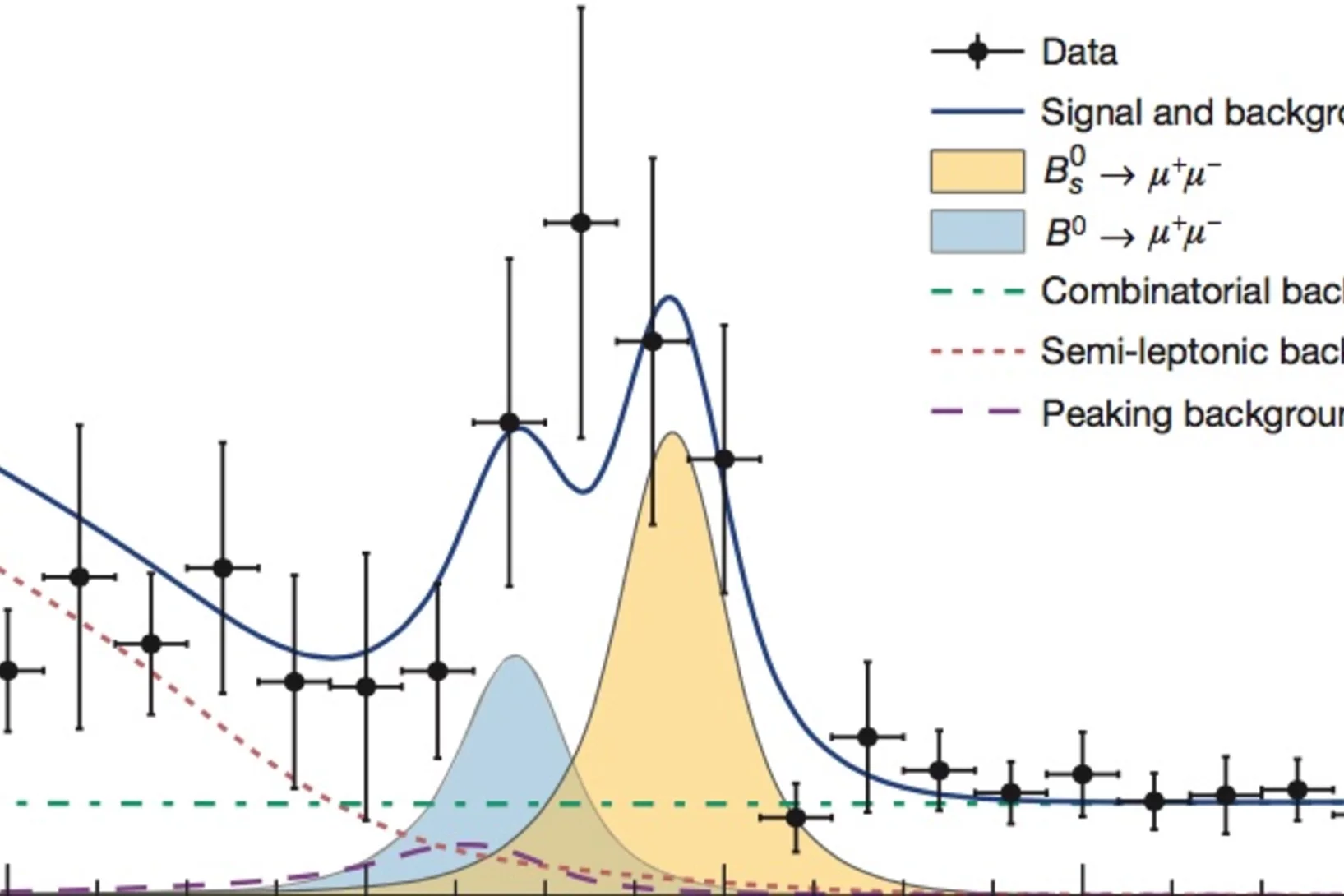2023 Physics Lab Award for Stephan Burkhalter
Stephan Burkhalter (PhD student in our group) is the recipient of this year’s Lab Award of the Physics Department at ETH Zurich.
Best Poster Award for Tiziano Bevilacqua
Tiziano Bevilacqua (PhD student in our group) has been awarded a price for the best poster at the Large Hadron Collider Physics conference (LHCP) that took place in Belgrade this year.
Marino Missiroli elected Trigger Coordinator of the CMS experiment at CERN
Marino Missiroli (postdoctoral researcher in our group) will join the management team of the CMS experiment at CERN as Trigger Co-Coordinator in September 2023.
Results on BS0 →μ+μ- decays with the CMS experiment
Results are reported on BS0 →μ+μ- decays using 61 fb-1 of proton-proton collision data obtained in 2011-2016 with the CMS experiment at the LHC (CERN). In the standard model (SM) of particle physics this decay can be precisely calculated with small theoretical uncertainties, making it an excellent probe for testing the limits of the SM. The branching fraction BF(BS0 →μ+μ-)=(2.9 ± 0.7) x 10-9 is measured with a statistical significance of 5.6 standard deviations. In addition, the effective lifetime of this decay is measured as 𝜏𝜇𝜇=1.70+0.61−0.44
ps. Both results are in good agreement with the SM prediction. In comparison to the previous analysis, a much improved muon identification algorithm significantly increased the purity and strongly reduced the background. As a consequence, the measurement of BF(B0 →μ+μ-) < 3.6 x 10-10 at 95% CL is no longer in tension to the SM, but fully compatible with it.
Observation of ttH Production
The observation of Higgs boson production in association with a top quark-antiquark pair is reported, based on a combined analysis of proton-proton collision data at center-of-mass energies of √s = 7,8, and 13 TeV, corresponding to integrated luminosities of up to 5.1, 19.7, and 35.9 fb-1, respectively. The data were collected with the CMS detector at the CERN LHC.
The Charpak-Ritz Prize 2018 is awarded to Roland Paul Horisberger
The Charpak-Ritz Prize 2018, jointly awarded by the French Physical Society and the Swiss Physical Society, has been bestowed to Roland Paul Horisberger for his numerous contributions to the development of precision silicon vertex detectors for particle physics experiments as well as for the application of these technologies in X-ray photon sciences.
Commissioning and first performance studies of the new CMS pixel detector
In the previous months the new CMS pixel detector was brought into operation. The detector was moved from PSI to CERN and installed in February, followed by an intensive period of commissioning and calibration. This process mostly involved the adjustment of many operational parameters which influence the detector performance, e.g.
Silicon pixel barrel detector successfully installed in the CMS experiment
Middle of February the upgraded CMS silicon pixel barrel detector has been moved from PSI to CERN and was successfully installed in the CMS experiment.
Observation of the rare BS0 →μ+μ- decay from the combined analysis of CMS and LHCb data
The standard model of particle physics describes the fundamental particles and their interactions via the strong, electromagnetic and weak forces. It provides precise predictions for measurable quantities that can be tested experimentally. The probabilities, or branching fractions, of the strange B meson (BS0) and the B0 meson decaying into two oppositely charged muons (μ+ and μ-) are especially inter- esting because of their sensitivity to theories that extend the standard model. The standard model predicts that the BS0 →μ+μ- and B0 →μ+μ- decays are very rare, with about four of the former occurring for every billion Bs0 mesons produced, and one of the latter occurring for every ten billion B0 mesons.


